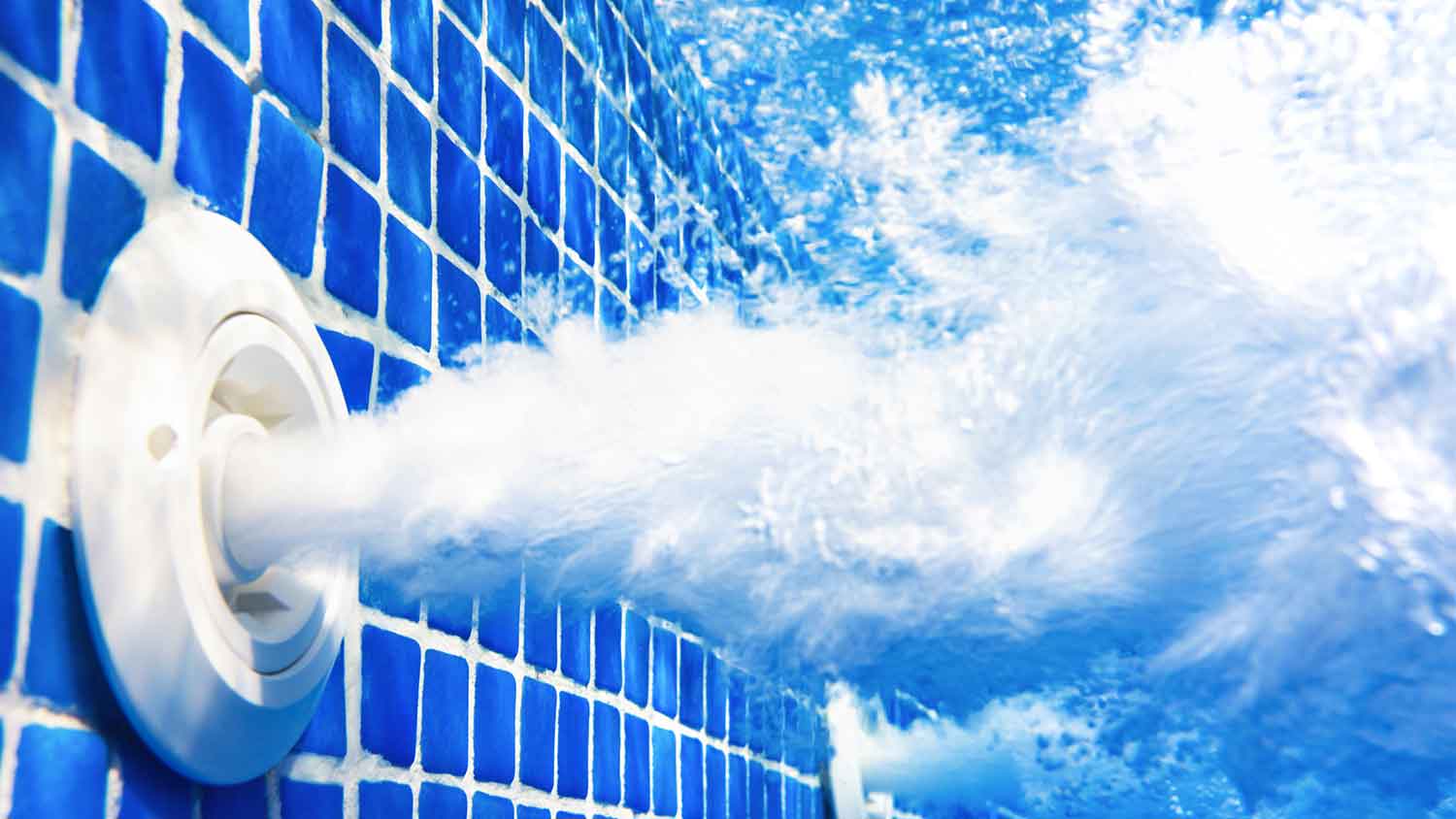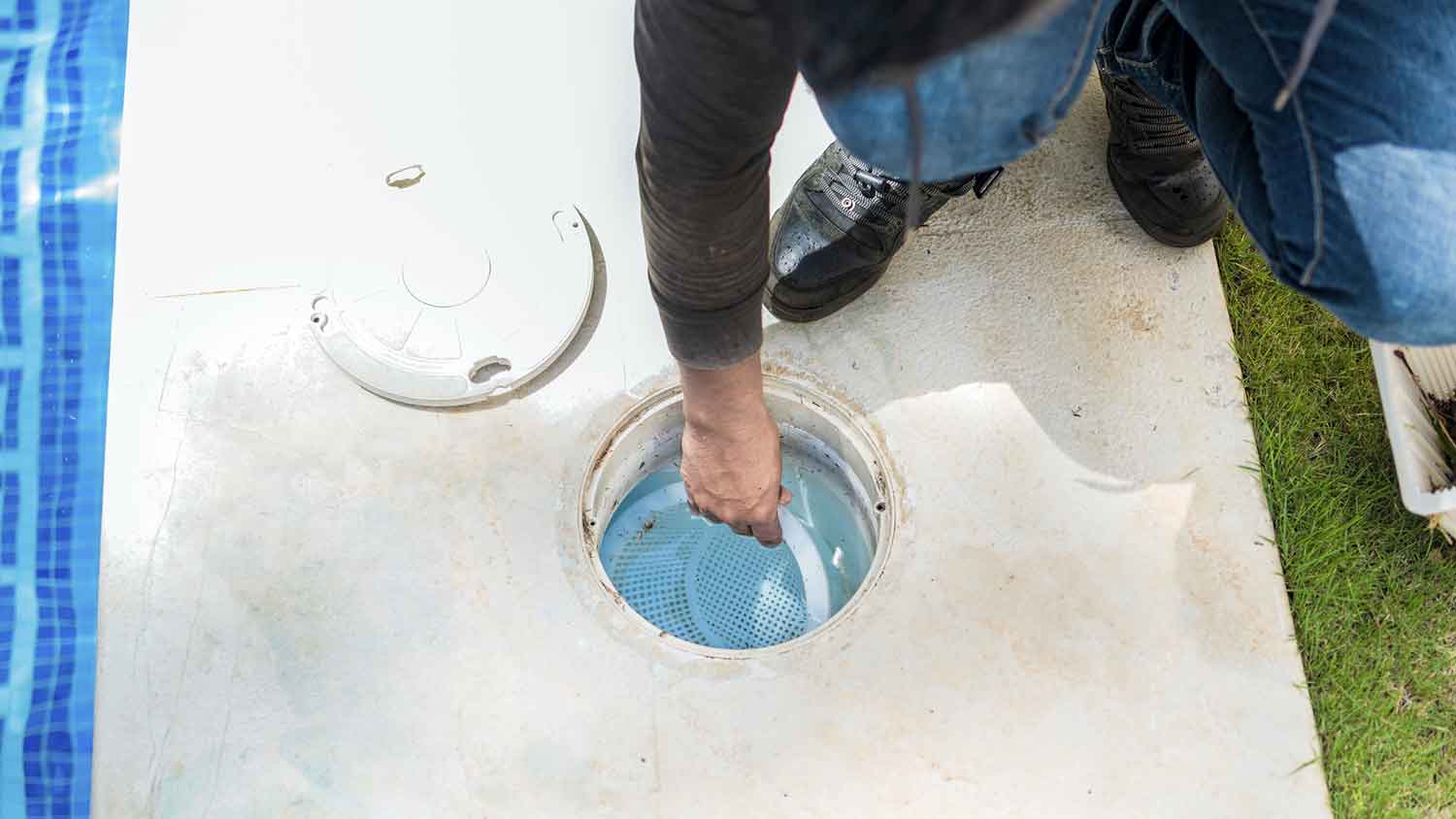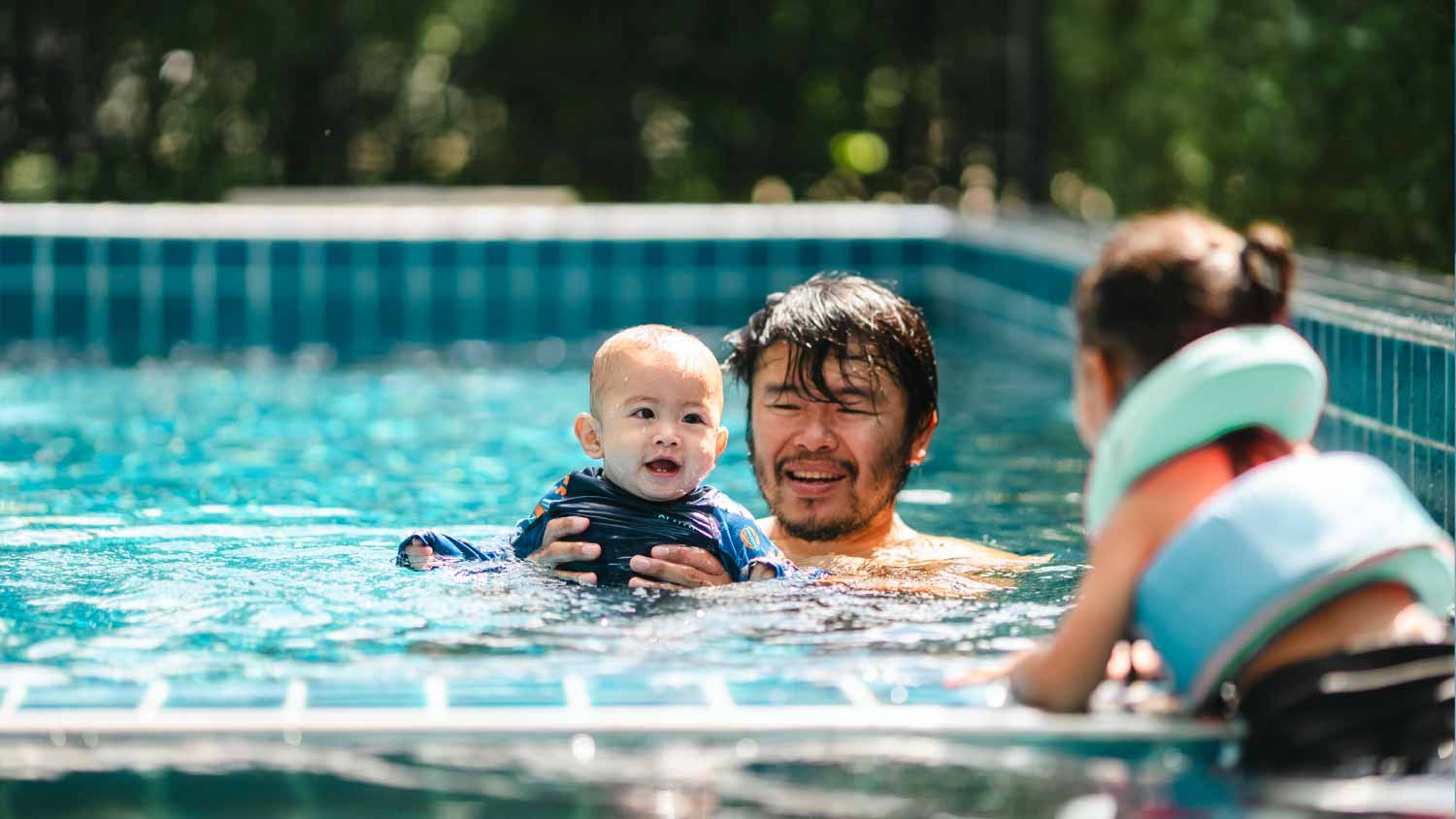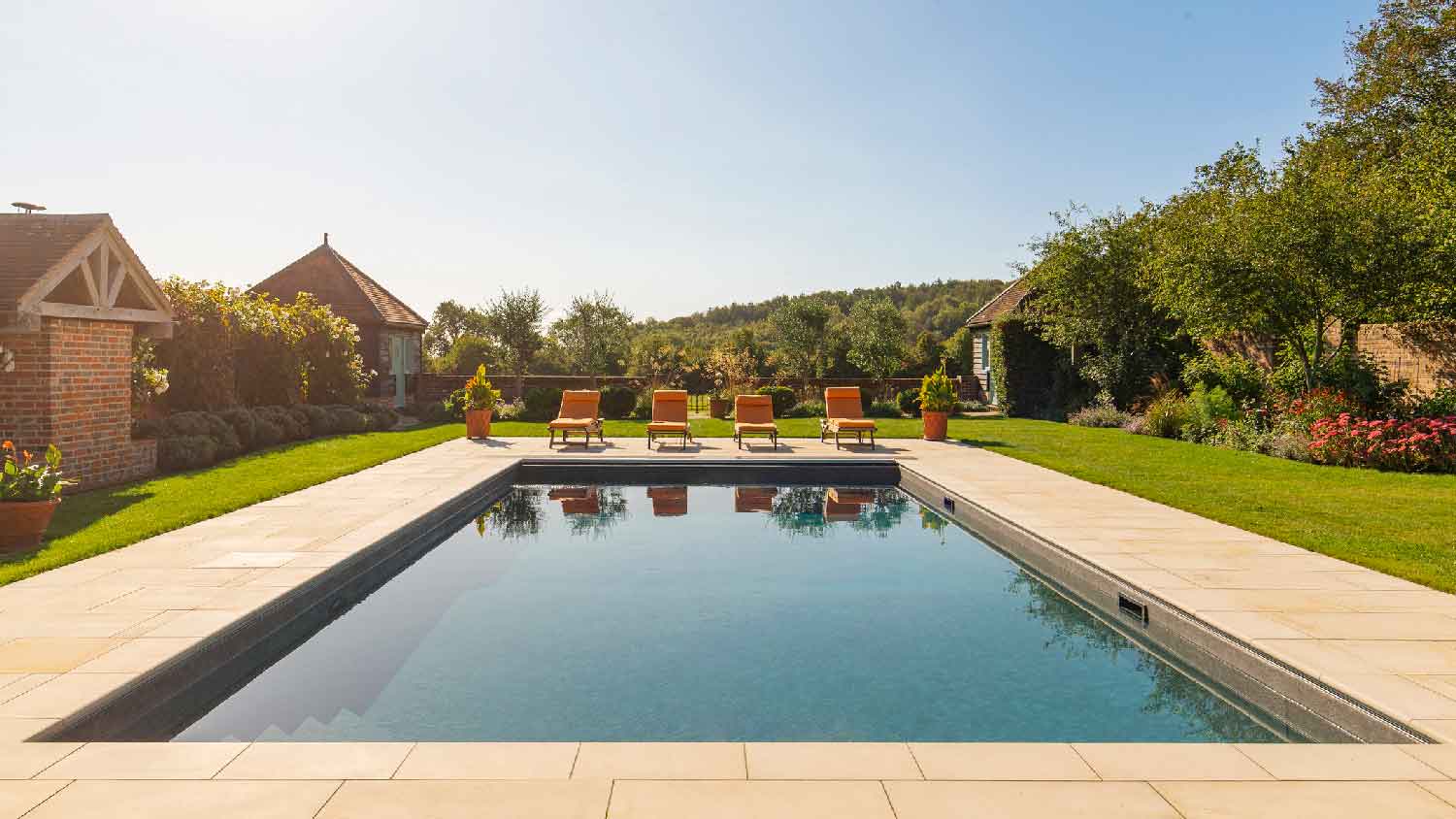Pool Jets Have Low Pressure? Here Are 4 Possible Reasons
Keep things moving in your pool


Pool jets move water around your pool, keeping algae and other problems in check.
If your pool's water level gets too low, it can lower the pressure from the jets.
A dirty filter or skimmer basket may also reduce pressure.
Less commonly, a leaky pipe can affect jet pressure.
Your swimming pool's jets play a big role in keeping the water in your pool moving and fresh. Without those jets, the water could be prone to algae growth and develop a dirty appearance—not exactly something you want to take a dip in after a long day. Here's what can cause low pressure in your pool jets and what you can do about it.
1. The Water Level Is Too Low
Your pool can lose water for a few reasons, from run-of-the-mill evaporation to a leak. During the summer, you can expect the water level to drop by about 1/4 inch per day, thanks to evaporation.
The less water in your pool, the more air can get into the pump, creating low pressure from the jets.
The Solution
Keep an eye on your pool's water levels. An easy way to see if it's dropped too low is to look at the skimmer opening on one side of the pool. The water should come about halfway up the opening.
You'll need to add more water if the level is below that. Simply stick a garden hose in the pool and turn it on. For more significant drops, you can also contact a pool water delivery service and ask them to fill up your pool.
2. The Skimmer Basket Is Full

Water returns to your pool through the jets and exits it through the skimmer. Just beyond the skimmer opening is a basket that collects large pieces of debris, such as fallen leaves, sticks, and insects.
If the basket gets full, less water flows from the pool to the pump, which means less water flows back into the pool through the jets. The result is low pressure from the jets.
The Solution
You should be able to take the basket out of the pool and clean it out. Usually, there's a lid located above the skimmer basket. Take off the lid, pull out the basket and remove any debris inside, whether it's a few leaves, bugs or other items blocking the water's flow.
3. The Filter is Dirty
While the skimmer basket collects bigger pieces of debris, small bits, such as dirt particles, can get through. Those particles can then accumulate in your pool's filter, eventually reducing the amount of water that flows through the filter and back into the pool through the jets.
The Solution
Cleaning the filter is the way to go here. How you clean a filter depends on the type. For a cartridge filter, you'll want to remove the cartridge and hose it down to remove any particles.
Cleaning a sand filter is more involved and typically involves a process called backwashing. You may want to hire a professional to clean it if your pool has a sand filter.
4. There's a Leak
A leak in one of your pool's pump pipes can reduce the pressure coming from the return jets. If you've ruled out other causes, such as a low water level or a blocked skimmer basket or filter, an air leak is likely to blame.
You can detect a leak in your pool's pump using soapy water. Turn the pump on and pour the bubbly water over the pipes, lids, and fittings. If there's a leak, you'll be able to see the soap bubbles getting drawn in.
The Solution
Sealing the leak is the way to go. Often, leaks are caused by a worn-out O-ring at the fitting. Replacing any worn O-rings should help to seal up the leak.
If you're not confident you've found the leak or feel unsure about the best way to stop it, a pro can help handle the job.
When to Call a Pro
A pool repair professional near you can help troubleshoot low pressure from the pool jets and determine the best way to fix it, especially if you’re uncomfortable fixing it on your own or are having trouble identifying the source.
How to Prevent Low Pressure from Your Pool Jets
A few simple maintenance tasks will help keep the pressure up:
Keep an eye on your pool's water level: Refill the pool before the water drops below the midway point on the skimmer opening.
Check the skimmer basket regularly: At least once a week or so, remove the lid, pull the basket out, and remove any debris from inside it.
Clean the filter: Clean your pool's filter based on the manufacturer's recommendations.
Frequently Asked Questions
You can usually use the water from your tap to refill your pool, whether it's city water or well water. If you're going to use well water to fill your pool, make sure you have an adequate amount of water available and that the water is free of contaminants. A water delivery service may also be able to bring water to refill your pool.
From keeping the water topped up to cleaning the filter, pool maintenance costs an average of $230 annually. Your pool's size and water treatment system are two main factors influencing the total maintenance cost. If you hire a pool maintenance company to take care of the pool for you, you can expect to pay $25 to $100 per hour for labor, depending on the job.















